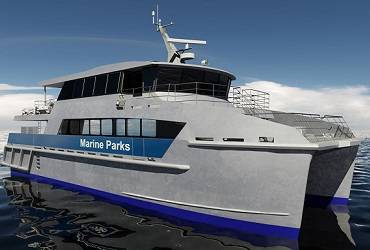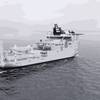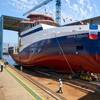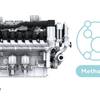Incat, MEC Start Building Great Barrier Reef Patrol Vessel
Incat Crowther and Marine Engineering Consultants (MEC) announced commencement on the construction of a 24-meter long-range Catamaran Patrol Vessel to work in the Great Barrier Reef World Heritage Area (GBRWHA). The GBRWHA is jointly managed by Queensland’s Department of National Parks, Recreation, Sport and Racing (DNPRSR) and the Great Barrier Reef Marine Park Authority (GBRMPA).
Incat Crowther submitted a concept design to competitive tender, characterized by its consideration for its operational environment and by the application of several new technologies. Incat Crowther was selected as the preferred designer on the basis of a superior hull form underpinning a rugged, versatile, cost-effective package. The design concept was used as the basis of a competitive build tender, with the build contract being awarded to MEC.
Among its environmental features, the vessel has extensive solar panels, high R-value insulation, zoned air conditioning, as well as window blinds and shutters to reduce the impact of the Queensland sun.
The extensive solar array takes advantage of modern lithium-ion batteries to reduce the use of diesel generators both in operation and whilst at anchor at night. The batteries are charged during the day by solar power, allowing the vessel’s diesel generators to remain shut down overnight. At these times, the battery bank will supply power for house loads, including air conditioning. In the event of increased demand, the generators will automatically start. Depending on the load case, they will either provide direct power, or charge the batteries. This reduces running costs and will reduce the cost of maintaining the generators. The cost effective nature of this configuration is further enhanced by the benefits of lithium ion batteries, Incat said. These batteries are a quarter of the weight and can provide up to 10 times the power and 10 times the lifecycle of conventional lead acid batteries.
The vessel’s aft deck houses a cradle for a six-meter RIB, which is capable of being launched and retrieved at speeds of up to six knots and in seas up to three meters. Dive tank racks are provided, as are a pair of bench seats for dive preparation. The main deck cabin features a large wet room aft, with toilet, shower and laundry facilities. A large mess with seats for 15 is situated opposite a large galley. A large pantry adjoins the galley and houses provisions for long missions. Additional storage is provided in the bridging structure, accessed via removable floor panels. Forward of this is a second lounge area to starboard and a pair of computer workstations to port. There are two twin cabins forward with a bathroom, and doors to the side deck providing easy access around the vessel.
Aft of the wheelhouse, the upper deck features two twin cabins, a bathroom, power tools store and cold store. The aft upper deck is divided in to two distinct spaces. Aft is a 4.5-meter RIB with crane for launch and retrieval. This area also houses the vessel’s cargo space, which is separated from the crew recreation space by cargo barriers. Forward of these barriers is an outdoor mess area with a barbecue.
An additional eight crew are accommodated in twin cabins in the hulls. Storage capacity is provided aft for 1,500 liters of unleaded petrol, for use on the RIBs.
Multiple drive train options were evaluated, with hybrid propulsion options at the forefront. Long term costs were taken into account, with the decision being to combine conventional diesels with supplementary solar panels and a highly-efficient hull form.
The vessel will be powered by a pair of Yanmar 6AYM-WGT engines, producing 670kW each. Capable of speeds up to 25 knots, the vessel is optimized for efficient cruising between 12 and 20 knots.
Incat Crowther and Marine Engineering Consultants are pleased to be the team selected for this project. By offering strong commercial and engineering packages, combined with attentive, client-based service, the result is a balanced, cost-effective vessel. The vessel is due to be launched in early 2014.
Principal Dimensions
Length Measured: 78’ 9” / 23.99m
Length Waterline: 81’ 4” / 24.79m
Beam Overall: 27’ 11” / 8.5m
Draft (hull): 4’ 3” / 1.3m
Draft (prop): 6’ 3” / 1.9m
Depth: 11’ 10” / 3.6m
Construction: Marine grade aluminum
Capacities
Fuel: 3,170 gallons / 12,000 liters
Fresh Water: 1,057 gallons / 4,000 liters
Sullage: 528 gallons / 2 000 liters
Crew: 14 (2B) 28 (1C)
Propulsion and Performance
Speed (Max): 25 knots
Speed (Service): 20 knots
Main Engines: two Yanmar 6AYM-WGT
Power: two 670kW
Propulsion: two five-bladed propeller
Electrical
Generators: two Northern Lights M65C2
Solar Panels: 80m2 / 8kW
Batteries: 144.8kWh Lithium-Ion battery bank
Regulatory
Flag: Australia
Notation: USL/NSCV 2B(14 pax) 1C (28 pax)












